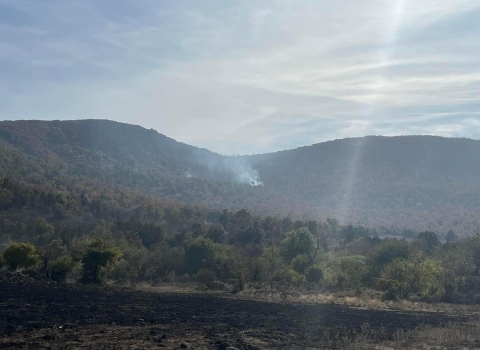Through the National Fish Habitat Partnership program, the U.S. Fish and Wildlife Service and its partners are providing more than $18 million to support 83 fish habitat conservation projects in 34 states. The Service is providing $4 million this year, with nongovernmental organizations, state resource agencies, and other partners contributing an additional $14 million.
Service biologists and partners will work on funded projects in priority areas to restore stream banks, remove man-made barriers to fish passage fish passage
Fish passage is the ability of fish or other aquatic species to move freely throughout their life to find food, reproduce, and complete their natural migration cycles. Millions of barriers to fish passage across the country are fragmenting habitat and leading to species declines. The U.S. Fish and Wildlife Service's National Fish Passage Program is working to reconnect watersheds to benefit both wildlife and people.
Learn more about fish passage , reduce erosion from farm and ranchlands, and conduct studies to identify conservation needs for fish and their habitats. Anticipated benefits include more robust fish populations, better fishing and healthier waterways. For example, projects this year include a dam removal in Indiana to benefit smallmouth bass, the addition of large wood material to a stream in Maine to benefit wild brook trout, a dam removal in California to benefit endangered salmon, and restoration of degraded estuary habitat to benefit native fish in Hawaii.
The National Fish Habitat Partnership program is a national investment strategy to maximize the impact of limited fish habitat conservation dollars on the ground. Under the program, federal, state, tribal and privately raised funds are leveraged through regional Fish Habitat Partnerships to address the nation’s biggest fish habitat challenges. The Service is a key partner in implementing the partnership, providing leadership and technical expertise on the local, regional and national levels, as well as financial assistance directly to partners.
The partnership brings the collective expertise of federal, state and non-governmental organizations to identify and prioritize conservation work to get the greatest benefit for fish and other aquatic resources and ultimately for the American people. “We depend on the efforts of these 20 unique partnerships to help us improve fish habitat. By working together, we can maximize our conservation achievements,” said Margaret Everson, Principal Deputy Director of the U.S. Fish and Wildlife Service.
“These projects represent some of the best collaborative initiatives in conservation today,” said Ed Schriever, director of the Idaho Department of Fish and Game and chair of the National Fish Habitat Board. “The leveraging of resources through our partnerships is remarkable, and it proves we can collectively achieve more to benefit fish habitat.”
View the full list of projects on our website. For more information about the National Fish Habitat Partnership, visit www.fishhabitat.org and connect on Facebook at www.facebook.com/NFHAP.
About the National Fish Habitat Partnership:
The National Fish Habitat Partnership works to conserve fish habitat nationwide, leveraging federal, state and private funding sources to achieve the greatest impact on fish populations through priority conservation projects. The mission of the program is “to protect, restore and enhance the nation's fish and aquatic communities through partnerships that foster fish habitat conservation and improve the quality of life for the American people.” The national partnership implements the National Fish Habitat Action Plan and supports 20 regional grassroots partner organizations. For more information visit http://www.fishhabitat.org


